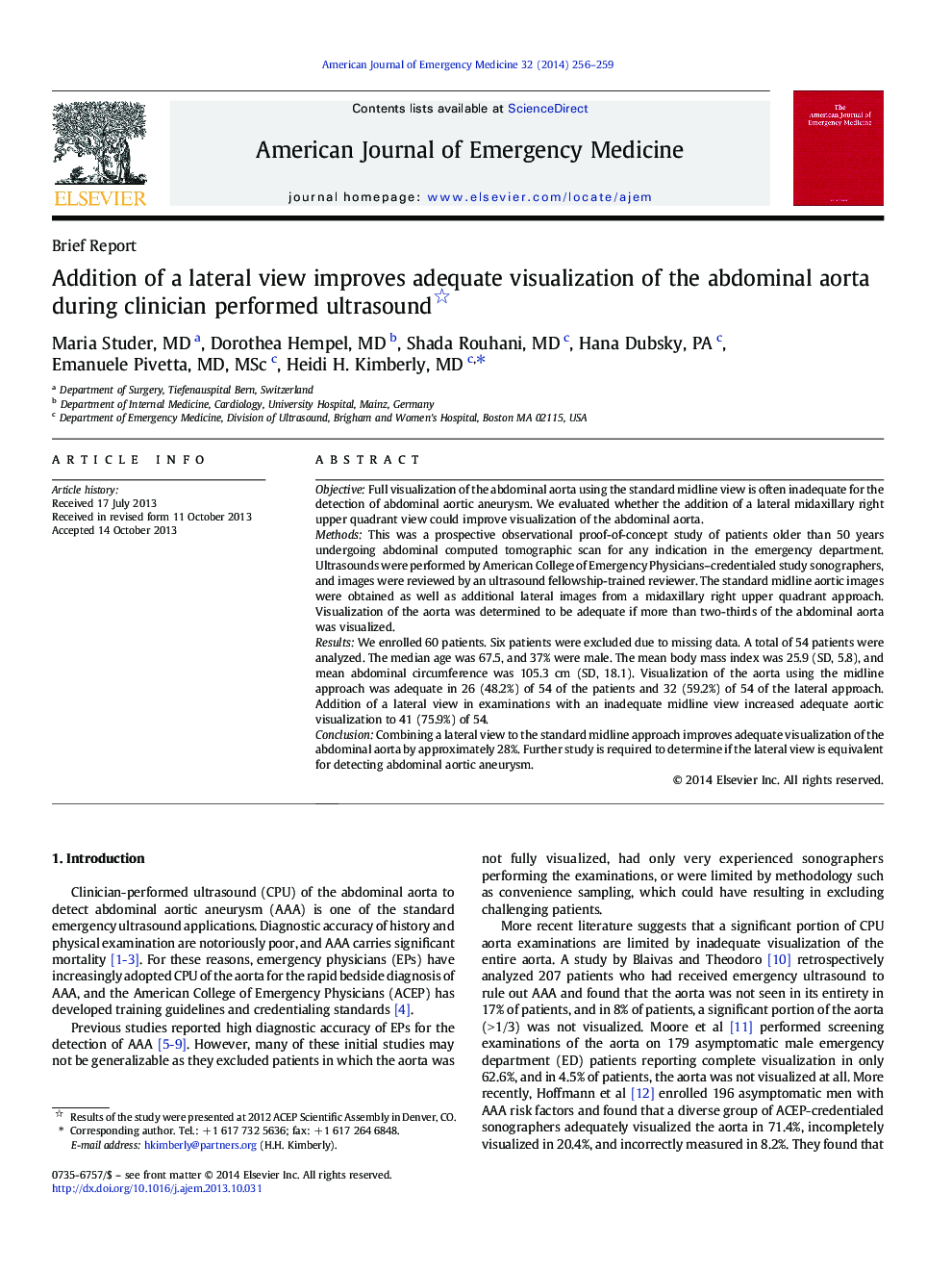| Article ID | Journal | Published Year | Pages | File Type |
|---|---|---|---|---|
| 3223975 | The American Journal of Emergency Medicine | 2014 | 4 Pages |
ObjectiveFull visualization of the abdominal aorta using the standard midline view is often inadequate for the detection of abdominal aortic aneurysm. We evaluated whether the addition of a lateral midaxillary right upper quadrant view could improve visualization of the abdominal aorta.MethodsThis was a prospective observational proof-of-concept study of patients older than 50 years undergoing abdominal computed tomographic scan for any indication in the emergency department. Ultrasounds were performed by American College of Emergency Physicians–credentialed study sonographers, and images were reviewed by an ultrasound fellowship-trained reviewer. The standard midline aortic images were obtained as well as additional lateral images from a midaxillary right upper quadrant approach. Visualization of the aorta was determined to be adequate if more than two-thirds of the abdominal aorta was visualized.ResultsWe enrolled 60 patients. Six patients were excluded due to missing data. A total of 54 patients were analyzed. The median age was 67.5, and 37% were male. The mean body mass index was 25.9 (SD, 5.8), and mean abdominal circumference was 105.3 cm (SD, 18.1). Visualization of the aorta using the midline approach was adequate in 26 (48.2%) of 54 of the patients and 32 (59.2%) of 54 of the lateral approach. Addition of a lateral view in examinations with an inadequate midline view increased adequate aortic visualization to 41 (75.9%) of 54.ConclusionCombining a lateral view to the standard midline approach improves adequate visualization of the abdominal aorta by approximately 28%. Further study is required to determine if the lateral view is equivalent for detecting abdominal aortic aneurysm.
